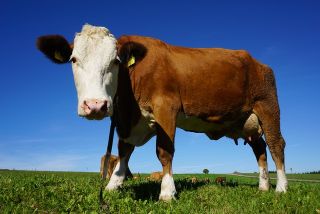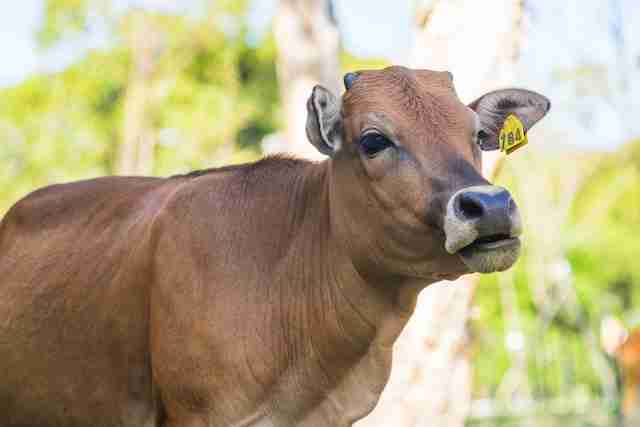Are Snails Decomposers? (COMPLETE ANSWER!!)
A snail passes as the type of animal that would eat just about anything. Today, you may find them eating worms and the next day, it could be your plants. This generalist feeding habit has made many ask – are snails decomposers?
Yes, snails are decomposers. They are among the small percentage of invertebrates that eat and digest detritus as well as dead plants and animals. Decomposers break down dead plants and animals and release nutrients to primary producers like plants.
In other words, the activity of snails and other decomposers plays a key role in the survival of life. Imagine what the earth would be without them. In this article, we will take a closer look at how snails are decomposers and other related roles they play in the food chain and ecosystem.

What Do Decomposers Do?
Decomposers are simply organisms that feed on dead plants and animals and return them to the soil as nutrients that the plants can use. Thus, they form the last link in the food chain. Without the activities of decomposers, dead organisms would just pile up everywhere and the soil will not be replenished with nutrients.
The major decomposers in the ecosystem include bacteria, fungi, and protozoa. Bacteria and protozoa are microscopic, and so cannot be seen with the naked eye. On the other hand, one can notice fungi without the aid of a microscope. Other organisms that also play an important role in the decomposition process include beetles, slugs, earthworms, flies, ants, and of course, snails.
Despite their incredibly small size, snails play very important roles in the ecosystem. Their primary function is that of maintenance. Without them to break down or putrefy things, the universe would be a huge dumpsite of dead organisms and matter. This means that deceased plants and animals will remain “tangible” and “useless”. As a result, no nutrients will be available for plants to grow, and consequently, no food for animals. In essence, the entire ecosystem would collapse.
So, in essence, the activities of decomposers help to maintain balance in the ecosystems, making nutrients available to plants which in turn provide food for animals. Also, by recycling dead matter, decomposers ensure there’s no pile-up of waste and the environment stays clean.
What Are Consumers?
Consumers are simply organisms that cannot produce their own food. They survive by feeding on other organisms (plants and animals). They are also referred to as heterotrophs. Classical examples of consumers are humans and fungi.
There are three types of consumers – primary consumers, secondary consumers, and tertiary consumers.
Primary consumers are animals that eat only food from plants. These animals are also referred to as herbivores and include small animals like mice and squirrels, medium-sized animals like goats and sheep, and large animals like buffalo and cows.
Secondary consumers are animals that feed on primary consumers or herbivores. They include carnivores (animals that eat only meat, e.g, snakes and spiders) and omnivores (animals that eat both plants and animals, e.g, skunks and bears).
Tertiary consumers feed on primary consumers and secondary consumers. These mostly include large sea creatures such as whales and sharks and apex creatures like crocodiles and lions. Humans are tertiary consumers.
Why Are Snails Decomposers And Consumers?
So, are snails decomposers or consumers? Having understood what decomposers and consumers are, we conclude that snails are both decomposers and consumers. Let’s see why this is so:
Snails As Decomposers
Snails are natural decomposers; they feed on organic waste and dead organisms and break them down into simpler inorganic materials. These materials are used as nutrients by plants and other primary producers. This helps with the flow of energy through the ecosystem.
Like many invertebrates, snails typically have small bodies which enable them to break down larger dead matter.
Snails As Consumers
Snails do not only consume dead matter, they also feed on plants and animals. The exact food they eat depends on the species and where you find them. Generally, conventional foods are algae, plants, fruits, and vegetables.
Many terrestrial snails feed on plants, which makes them primary consumers. For those of them that live in the forest and other green spaces, the common foods are stems, tree bark, and green leaves. They may also consume certain types of crops like lettuce, berries, and mushrooms. This group are mainly herbivores.
Some other snails feed on other animals while also being prey to larger animals or predators. This group is regarded as secondary consumers or carnivores. Carnivorous snails can be found both in water and on land and attack smaller animals such as earthworms and slugs. Some even feed on their baby eggs and other species of snails; making them cannibalistic.
Aquatic snails mostly feed on algae found on reefs, rocks, and submerged logs, as well as plant life.
Snails As Detritivores
Snails are a subset of decomposers called detritivores. Detritivores are organisms that feed on detritus (decaying matter and waste materials). Some species typically seek out this detritus in your garden. And when they find them, they feed and digest them, and then absorb the nutrients.
Besides snails, other invertebrates also considered detritivores include millipedes, earthworms, and termites. It’s worth noting that even though detritivores play an important role in the decomposition of organic matter, their activities are not as impactful as main decomposers such as bacteria and protozoa. Fungi are also major decomposers, but unlike bacteria, they are visible to the naked eye.
Detritivores help the main decomposers by exposing more of the decaying matter for them to break down.
Other Related Questions
Are snails producers?
Snails are not producers. They cannot produce their own food but instead, depend on other organisms (such as plants) for survival. They lack chlorophyll and other cell organs required for photosynthesis.
Are snails scavengers?
A scavenger is basically an organism that feeds on dead plant materials or carcasses. From this definition, we can conclude that snails are indeed scavengers. The term, however, is mostly used to describe larger animals such as coyotes, vultures, jackals, and raccoons.
Are snails herbivores
Yes, most species of snails are herbivores. This means that they mainly feed on plants and vegetable matter. These include both terrestrial and aquatic snails.
Are snails decomposers or detritivores?
Snails are both decomposers and detritivores. Detritivores are a subset of decomposers. They are not the main decomposers but help in the decomposition process. They feed on the dead and rotting organic matter, exposing it more and creating more decaying matter for the main decomposers to break down.





